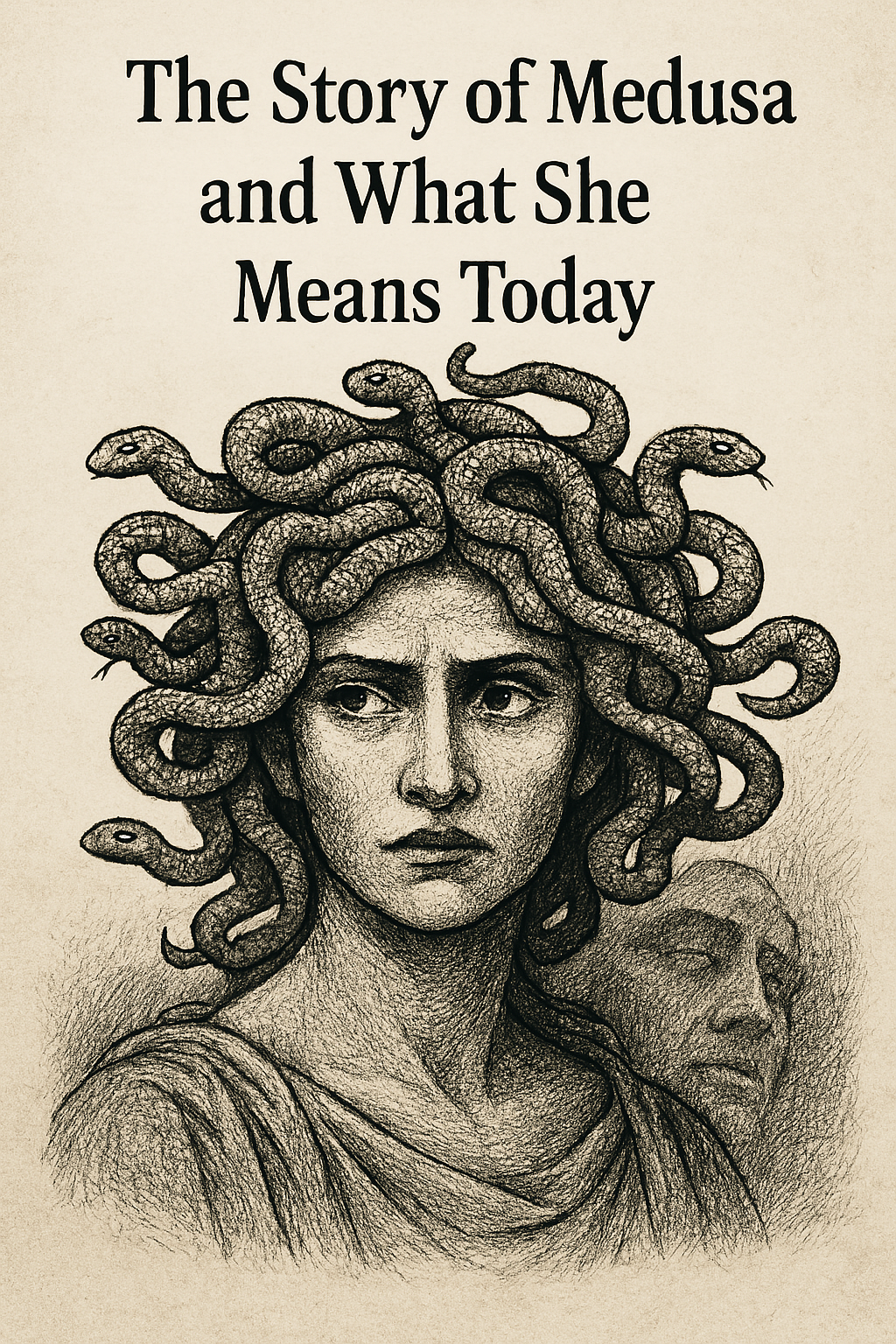
The Story of Medusa and What She Means Today
This past week I took my Percy Jackson books off my shelf to start my yearly reread. As I started rereading this first book, I was reminded of the first monster Percy and his friends encounter: Medusa. Who better to write my first post about, than the figure I named my blog after?
Percy and his crew were immediately able to recognize Medusa once she revealed her true form and that got me thinking, few figures from Greek mythology are as recognizable as Medusa. She has snakes for hair and a gaze that turns mortals to stone, leading her to be portrayed as a terrifying monster in the eyes of Percy Jackson as well as the general public. As a young girl, I was always slightly scared of this so-called snake woman hybrid, but as I’ve gotten older, I’ve come to appreciate her story, which is both complicated and very human.
In the earliest versions of her myth, Medusa was one of the three Gorgons, monstrous sisters with snake-like features. However, unlike her immortal siblings, Medusa was mortal. Later retellings, especially from the Roman poet Ovid, tell a darker and more tragic story. According to Metamorphoses by Ovid, Medusa was a beautiful maiden and a priestess of Athena. When she was assaulted by Poseidon in Athena’s temple, the goddess, rather than punishing the god, took out her wrath on Medusa transforming her into a Gorgon (a monster with snake hair who can turn people who make eye contact into stone) as punishment for the assault. From that point on, Medusa’s life was full of isolation and fear, as she was the only mortal gorgon. For example, Perseus beheaded her in her sleep due to her status as a mortal gorgon and used her head as a weapon, even after her death.
Ovid’s version of Medusa is the most popular and mainstream retelling as it provides a backstory for how Medusa ended up the way she is as opposed to just portraying her as a total monster.
For centuries, Medusa’s image was used to instill fear. Ancient Greeks placed her face, which is known as the Gorgoneion, on armor, shields, and buildings as a protective symbol. This is because it was believed that her scary appearance can ward off evil, similar to an evil eye. But over time, her meaning has evolved.
In the modern day and age, Medusa has been reclaimed as a symbol of rage, resistance, and reclamation of power. Her transformation and punishment have been reinterpreted as metaphors for the ways society silences women who survive trauma. Artists, writers, and activists have embraced Medusa not as a monster, but as a misunderstood figure whose story reflects broader struggles for justice.
Medusa’s image has even made its way into fashion and pop culture. The luxury brand Versace famously uses the Gorgon’s head as its logo showing the modern take of medusa’s beauty and fierceness.
Medusa’s story forces us to examine how myths and stories are told and who gets to tell them. Is she a monster to be feared? A victim to be pitied? Or a survivor who carved her own story from what was done to her? Overall, it is important to recognize all sides of a story, and let people tell their side of a story.
